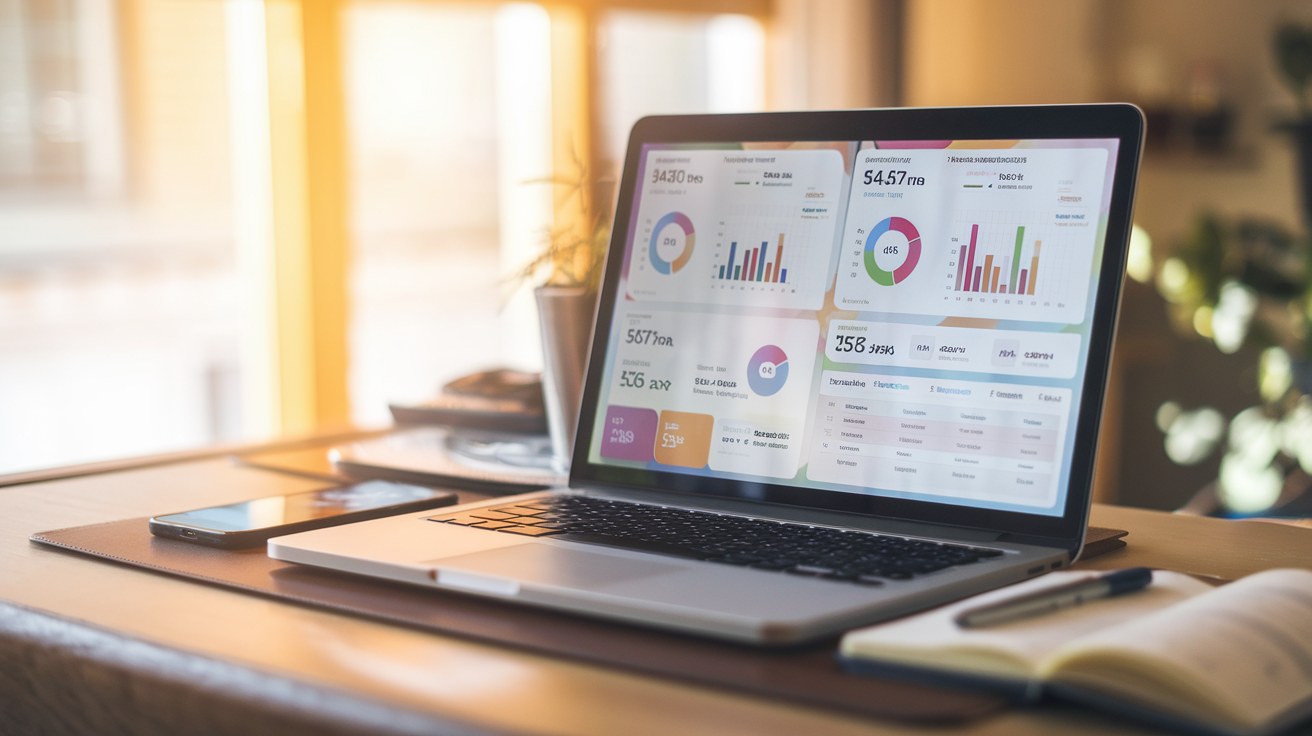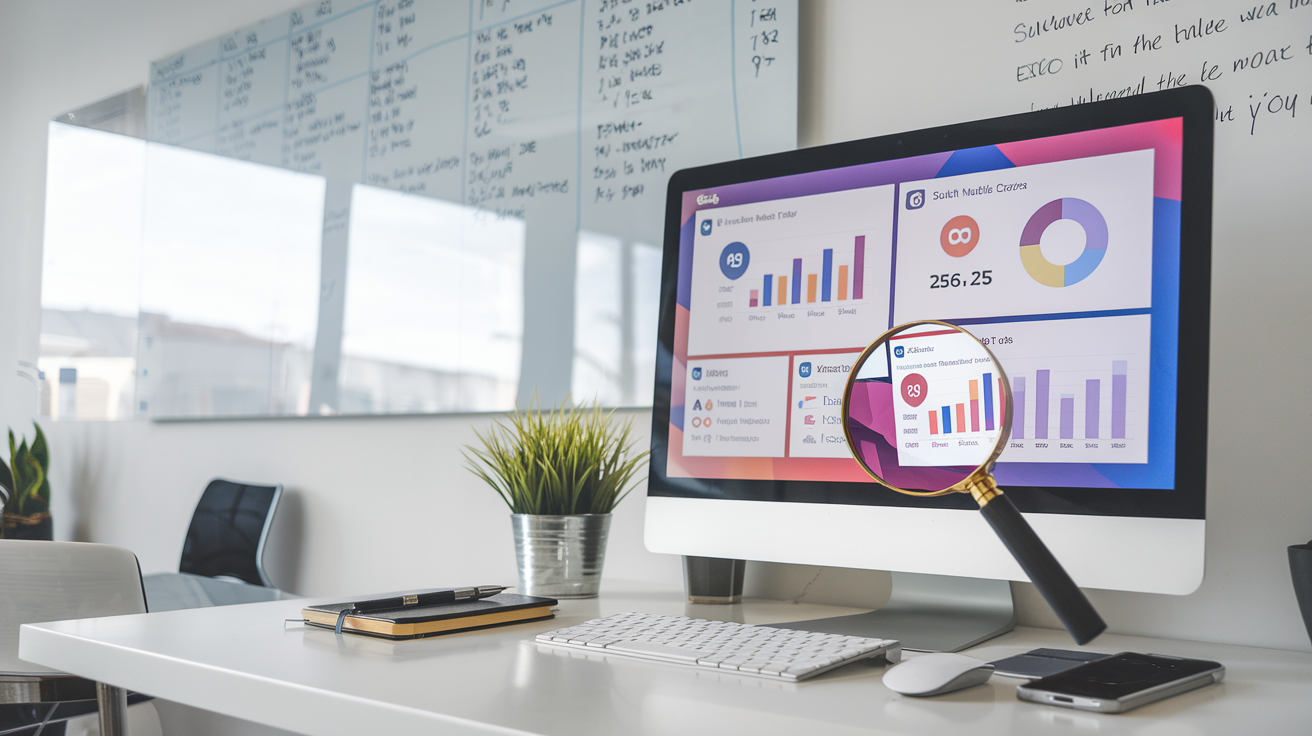Are you struggling to make sense of your social media performance? 😕 In today’s digital landscape, understanding your online presence is crucial for success. But with so many metrics and tools available, it’s easy to feel overwhelmed and unsure where to start.
Luckily, you don’t need a hefty budget to gain valuable insights into your social media growth. 🚀 There’s a wealth of free tools at your fingertips that can help you analyze your audience, track engagement, and measure your content’s impact. These user-friendly solutions can transform raw data into actionable strategies, giving you the power to elevate your social media game without breaking the bank.
In this blog post, we’ll explore a range of free tools that can revolutionize your approach to social media analytics. From understanding the basics of social media metrics to automating reports and keeping an eye on your competitors, we’ll cover everything you need to supercharge your online presence. So, let’s dive in and discover how these powerful free resources can help you unlock the full potential of your social media efforts! 💪
Understanding Social Media Analytics

Key metrics for measuring growth
When it comes to measuring social media growth, focusing on the right metrics is crucial. Here are some key metrics to track:
- Follower growth rate
- Engagement rate
- Reach and impressions
- Click-through rate (CTR)
- Conversion rate
| Metric | Description | Importance |
|---|---|---|
| Follower growth rate | Percentage increase in followers over time | Indicates audience expansion |
| Engagement rate | Likes, comments, shares relative to follower count | Shows audience interaction |
| Reach and impressions | Number of unique users who saw your content | Measures content visibility |
| Click-through rate | Percentage of users who clicked on your links | Indicates content effectiveness |
| Conversion rate | Percentage of users who completed a desired action | Measures ROI |
Importance of data-driven decision making
Data-driven decision making is essential for effective social media management. By analyzing these metrics, you can:
- Identify which content resonates with your audience
- Determine the best times to post for maximum engagement
- Allocate resources to the most effective platforms
- Adjust your strategy based on real-time performance data
Setting realistic growth goals
Now that we understand the key metrics and the importance of data, let’s focus on setting achievable growth goals:
- Analyze historical data to establish baselines
- Research industry benchmarks for context
- Set SMART goals (Specific, Measurable, Achievable, Relevant, Time-bound)
- Break down long-term objectives into short-term milestones
- Regularly review and adjust goals based on performance
Remember, realistic goals motivate your team and provide a clear direction for your social media efforts. With these insights, you’re well-equipped to start leveraging free analytics tools to track and improve your social media performance.
Top Free Social Media Analytics Tools

A. Native platform analytics (Facebook Insights, Twitter Analytics)
Most social media platforms offer built-in analytics tools that provide valuable insights into your account’s performance. Facebook Insights and Twitter Analytics are two prime examples of these native tools.
Facebook Insights
Facebook Insights offers a comprehensive overview of your page’s performance, including:
- Page views and likes
- Post reach and engagement
- Audience demographics
- Best-performing content
Twitter Analytics
Twitter Analytics provides similar data for your Twitter account:
- Tweet impressions and engagement rates
- Follower growth and demographics
- Top-performing tweets
- Best times to tweet
| Feature | Facebook Insights | Twitter Analytics |
|---|---|---|
| Audience demographics | ✓ | ✓ |
| Post performance | ✓ | ✓ |
| Follower growth | ✓ | ✓ |
| Best posting times | ✓ | ✓ |
B. Google Analytics for social media traffic
While not exclusively a social media tool, Google Analytics is invaluable for tracking social media traffic to your website. It allows you to:
- Measure social media referrals
- Track conversions from social platforms
- Analyze user behavior from social traffic
C. Hootsuite’s free plan features
Hootsuite’s free plan offers basic analytics for up to three social profiles:
- Schedule and publish posts
- View real-time analytics
- Track follower growth
- Monitor engagement metrics
D. Buffer’s analytics offerings
Buffer’s free plan includes:
- Engagement rate tracking
- Reach and impression data
- Scheduling for up to three social accounts
These free tools provide a solid foundation for analyzing your social media growth. By leveraging their features, you can gain valuable insights into your audience, content performance, and overall social media strategy effectiveness.
Tracking Audience Growth and Engagement

Follower count and growth rate
Tracking your follower count and growth rate is essential for understanding your social media presence. Here’s a breakdown of these metrics:
| Metric | Description | Importance |
|---|---|---|
| Follower Count | Total number of followers | Indicates overall reach |
| Growth Rate | Percentage increase in followers over time | Shows audience expansion |
To calculate your growth rate:
- Choose a time period (e.g., monthly)
- Subtract starting follower count from ending count
- Divide by starting count and multiply by 100
Engagement rate calculation
Engagement rate measures how actively your audience interacts with your content. It’s a crucial metric for assessing the effectiveness of your social media strategy.
Calculation formula:
Engagement Rate = (Total Engagements / Total Followers) x 100
Types of engagements to track:
- Likes
- Comments
- Shares
- Saves
- Click-throughs
Content performance analysis
Analyzing content performance helps you understand what resonates with your audience. Key metrics to monitor include:
- Reach: Number of unique users who saw your post
- Impressions: Total number of times your post was displayed
- Engagement rate per post
- Click-through rate (CTR)
- Video views and watch time (if applicable)
Audience demographics insights
Understanding your audience demographics is crucial for tailoring your content and strategy. Key insights to gather:
- Age distribution
- Gender breakdown
- Geographic location
- Language preferences
- Interests and behaviors
Now that we’ve covered tracking audience growth and engagement, let’s explore how to monitor content performance more closely.
Monitoring Content Performance

Post reach and impressions
Understanding post reach and impressions is crucial for monitoring your content performance on social media. These metrics provide insights into how far your content spreads and how often it’s seen by your audience.
- Post reach: The number of unique users who have seen your content
- Impressions: The total number of times your content has been displayed
| Metric | Definition | Importance |
|---|---|---|
| Reach | Unique viewers | Audience size |
| Impressions | Total views | Content visibility |
To effectively track these metrics:
- Use platform-specific analytics tools (e.g., Facebook Insights, Twitter Analytics)
- Compare reach and impressions across different posts
- Analyze trends over time to identify content that resonates with your audience
Click-through rates and conversions
Click-through rates (CTR) and conversions are key indicators of how well your content drives action from your audience.
- CTR: The percentage of users who click on a link in your post
- Conversions: The number of users who complete a desired action (e.g., sign-up, purchase)
To improve CTR and conversions:
- Craft compelling calls-to-action (CTAs)
- A/B test different post formats and copy
- Optimize landing pages for conversions
Hashtag performance tracking
Tracking hashtag performance helps you understand which tags are most effective in expanding your content’s reach and engagement.
Key metrics to monitor:
- Reach of posts using specific hashtags
- Engagement rates on hashtagged content
- Trending hashtags in your industry
Best times to post analysis
Identifying the optimal times to post can significantly boost your content’s performance. Analyze your audience’s online behavior to determine when they’re most active and receptive.
Consider:
- Time zones of your target audience
- Peak engagement hours for each platform
- Day of the week variations in performance
By consistently monitoring these aspects of content performance, you can refine your social media strategy and maximize the impact of your posts. Next, we’ll explore free tools for competitor analysis, which can provide valuable insights to further enhance your social media growth.
Competitor Analysis Tools

Social Blade for YouTube and Twitter
Social Blade is a powerful free tool for analyzing competitors on YouTube and Twitter. It provides valuable insights into channel growth, subscriber counts, and estimated earnings. Here’s a breakdown of its key features:
| Feature | YouTube | |
|---|---|---|
| Subscriber Count | ✓ | ✓ (Followers) |
| View Count | ✓ | ✓ (Tweet Views) |
| Estimated Earnings | ✓ | – |
| Growth Trends | ✓ | ✓ |
| Ranking | ✓ | ✓ |
Use Social Blade to:
- Track competitor growth over time
- Identify successful content strategies
- Benchmark your performance against industry leaders
Fanpage Karma’s free features
Fanpage Karma offers a range of free features for competitor analysis on various social media platforms. While the paid version provides more in-depth insights, the free tier still offers valuable data:
- Page performance metrics
- Post engagement analysis
- Best posting times
- Fan growth tracking
These features allow you to gain a better understanding of your competitors’ social media strategies and adjust your own accordingly.
Similar Web for website traffic comparison
Similar Web is an excellent tool for comparing website traffic, including social media referrals. Its free version provides:
- Monthly visit estimates
- Traffic sources breakdown
- Top referring social networks
- Audience demographics
By analyzing this data, you can identify which social platforms are driving the most traffic to your competitors’ websites and adjust your social media strategy to capture a larger share of your target audience.
With these competitor analysis tools, you’ll be well-equipped to understand your market position and refine your social media strategy. Next, we’ll explore how to effectively visualize the data you’ve gathered using free tools, helping you to present your findings in a clear and impactful way.
Visualizing Data with Free Tools

Canva for creating infographics
Canva offers a user-friendly platform for creating stunning infographics that can effectively communicate your social media data. With its drag-and-drop interface and pre-designed templates, you can easily visualize complex metrics in an appealing and shareable format. Here’s a quick guide to using Canva for social media infographics:
- Choose a template
- Customize colors and fonts
- Add your data and metrics
- Include relevant icons and graphics
- Review and download
Google Data Studio for customizable dashboards
Google Data Studio provides a powerful, free tool for creating interactive dashboards that can bring your social media data to life. Its integration with various data sources makes it ideal for comprehensive analytics visualization. Key features include:
- Real-time data updates
- Customizable layouts and designs
- Shareable reports
- Integration with multiple data sources
| Feature | Benefit |
|---|---|
| Data Connectors | Easy integration with various platforms |
| Interactive Elements | Engage viewers with clickable charts |
| Collaboration | Team members can work together on reports |
Tableau Public for advanced data visualization
For those seeking more advanced visualization capabilities, Tableau Public offers a free version of its renowned data analytics software. This tool allows you to create complex, interactive visualizations that can uncover deeper insights from your social media data. Tableau Public excels in:
- Creating dynamic charts and graphs
- Mapping geographical data
- Building interactive dashboards
- Handling large datasets efficiently
By leveraging these free tools, you can transform raw social media data into compelling visual stories that highlight your growth and engagement metrics effectively. Next, we’ll explore how to automate your reporting process to save time and ensure consistent analysis of your social media performance.
Automating Reports and Alerts

IFTTT for custom social media alerts
IFTTT (If This Then That) is a powerful automation tool that can revolutionize your social media reporting. By creating custom applets, you can receive instant alerts for various social media activities. Here’s how to leverage IFTTT for your social media analytics:
- Set up alerts for:
- New followers
- Mentions of your brand
- Hashtag usage
- Competitor activities
| IFTTT Trigger | Action |
|---|---|
| New Twitter follower | Send email notification |
| Brand mention on Instagram | Push notification to phone |
| Specific hashtag used | Add to Google Sheet |
| Competitor posts on Facebook | Send daily digest |
Cyfe’s free dashboard for multiple platforms
Cyfe offers a comprehensive free dashboard that consolidates data from various social media platforms. This all-in-one solution streamlines your reporting process:
- Monitor up to 5 social media accounts
- Customize widgets for different metrics
- Real-time data updates
- Export reports in multiple formats
Automated email reports setup
Setting up automated email reports ensures that you and your team stay informed without manual effort. Here’s how to implement this:
- Choose a tool (e.g., Hootsuite, Buffer, Sprout Social)
- Select metrics to include in the report
- Set frequency (daily, weekly, monthly)
- Define recipients
By automating your social media reports and alerts, you’ll save time and maintain a consistent flow of information. This allows you to focus on strategy and content creation while staying informed about your social media performance across platforms.

Social media analytics play a crucial role in understanding and improving your online presence. By leveraging free tools, you can track audience growth, monitor content performance, and analyze competitors without breaking the bank. From comprehensive platforms like Google Analytics and Facebook Insights to specialized tools for engagement tracking and competitor analysis, there’s a wealth of options available to help you make data-driven decisions.
As you embark on your social media analytics journey, remember that consistency is key. Regularly review your metrics, experiment with different content strategies, and adapt your approach based on the insights you gather. By harnessing the power of these free tools, you’ll be well-equipped to drive meaningful growth and engagement across your social media channels, ultimately strengthening your brand’s online presence and connecting with your audience more effectively.







